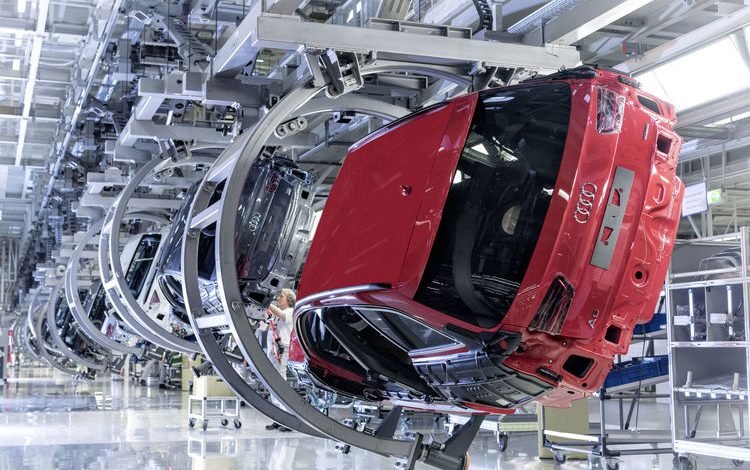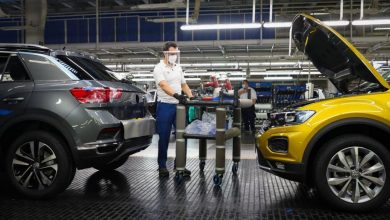
What’s behind the tens of thousands of auto industry job cuts?
A decade after the collapse of the global auto industry, auto workers brace for tens of thousands of redundancies. By Martin Kahl
The 2020s have long been held up as the decade of change for the automotive industry, with CASE technologies—connected, autonomous, shared and electrified—expected to significantly reshape mobility as we know it.
And now the Twenties have arrived, and CASE technologies are indeed starting to reshape the automaker-consumer relationship, and the way that automakers approach vehicle development and the business models they operate. But at the start of the 2020s, the automotive industry finds itself facing not just the impact of CASE, but also much more fundamental change.
A rude awakening
A decline of more than 4% in global light vehicle (LV) sales in 2019 confirmed fears of a significant downturn in the world car market that began in 2018 after eight years of growth.
A rude awakening after a period of rude health, the industry entered the new decade on the back foot, burdened with the knowledge of trouble ahead thanks to tightening regulations, CASE-related changing consumer behaviour, and the associated restructuring that automakers and their suppliers will need to make to remain profitable—and indeed relevant.

In terms of vehicle sales, almost three-quarters of the global market decline in 2019 can be attributed to weakness in Asian markets, with particularly sharp drops in consumer demand in China and India.
The latest edition of Automotive World’s quarterly automaker review, The automaker data book – Q4 2019, outlines some of the key events as the automakers saw out a decade that had delivered so much in the way of positivity, not least a global LV sales peak of 93.3 million units in 2017.
Despite the weak end to the decade—global LV sales in 2019 stood at just 88.99 million units—and the challenges that lie ahead, Jonathan Storey, who authored the Automotive World report, holds out some optimism for slow growth in the global industry in 2020; he acknowledges the likelihood of declines in Eastern Europe, Central Asia and NAFTA, but forecasts small increases in Africa, Asia, EU+EFTA, Middle East and South America that will result in a slight uptick in the global LV market.
It seems, however, that the biggest impact of CASE technology in the 2020s will be felt not by consumers plugging in their cars, or enjoying high-speed connectivity-dependent infotainment services, or even in whether they own or drive cars at all, but by those affected by thousands of redundancies announced across the global automotive industry.
Automakers announce tens of thousands of job cuts…
According to Essen, Germany-headquartered Center for Automotive Research (CAR), although e-mobility could be behind the creation of 109,000 new jobs by 2030, it could also lead to 234,000 job losses at suppliers and automakers in the same timeframe.

During 2019, news about job cuts came thick and fast. The Volkswagen Group announced in March 2019 that the VW brand would cut up to 7,000 jobs as part of an initiative to boost productivity and deliver annual savings of €5.9bn (US$6.7bn) by 2023. Audi said in November that it will cut 9,500 existing jobs by 2025, softening the blow only slightly with news that it will also create 2,000 new positions in digital and e-mobility, leading to overall savings of €6bn.
Up to 6,000 jobs could reportedly go at BMW by 2022, by when Daimler will have cut 1,100 positions. Daimler has plans for a headcount reduction of 10,000 overall, including a 10% cut in management globally; an existing jobs agreement runs to 2029, and the company says it aims to achieve the reduction through natural wastage and part-time retirement packages.
In June 2019, Ford confirmed plans to cut 12,000 jobs in Europe by the end of 2020, of which 2,000 were salaried roles confirmed in an earlier announcement of 7,000 salaried job cuts worldwide. And in 2018 and 2019, GM announced a total of 19,000 job cuts and accompanying factory closures, as well as a 25% reduction in executive positions—all moves deemed “necessary to secure the future of the company”.
The Sunderland, UK Nissan factory would be unaffected by the 12,500 job cuts announced by the automaker in July 2019, but the facility’s future ultimately depends on the UK government’s Brexit negotiations. Honda’s Swindon, UK factory closure will affect 3,500 jobs directly, and JLR’s January 2020 announcement of 500 job cuts at Halewood adds to the 5,500 worldwide redundancies it announced in 2018 and 2019.
…with suppliers also heavily affected
Cuts at automakers have knock-on effects, and the major suppliers are also heavily impacted. Brose announced in October that it is cutting 2,000 jobs in Germany over three years. By the end of 2022, Robert Bosch will have cut 3,500 jobs in Germany, and reports in January 2020 suggest that the company will cut around 2,000 jobs in India, where automakers are expected to make tens of thousands of redundancies.

Continental’s existing workforce will shrink by 5,500 jobs by 2028, as part of a strategy of “investing to save” that will see it spend €1.1bn (US$1.2bn) to 2029 to achieve annual savings of €500m from 2023. Engine manufacturer Cummins, which has grown its workforce since 2015 from 54,000 to 62,000 employees, will cut 2,000 jobs in Q1 2020 to achieve US$250-300m in structural cost savings.
A CASE of a cyclical industry?
In almost every announcement, electrification or CASE have been referenced. Clearly, electrification specifically and CASE more broadly will have a significant impact on automakers and suppliers, as acknowledged by Michael Manley, Chief Executive of FCA and President of the European Automobile Manufacturers’ Association (ACEA), in a statement in January 2020: “At the very time when our industry is massively stepping up investments in zero-emission vehicles, the market is set to contract—not only in the EU but also globally—so the transition to carbon neutrality needs to be very well managed by policy makers.”
There’s no denying that the next decade will see the industry transition from combustion engine dominance to some form of electrification. But can CASE or even just electrification be the reason for all of these job cuts?
Storey remains unconvinced, urging caution and restraint when attributing blame for the redundancies on CASE technologies, emphasising the fact that many of the cuts will take place over a number of years. He notes CASE as one of four separate but overlapping factors behind the announcements, the first of which is the general industry downturn that resulted in around 4 million fewer light vehicles in 2019 after the industry peak two years earlier: “That’s equivalent to ten sizeable assembly plants.”

The second is margin pressure, and what Storey calls “the automakers’ new-found intolerance for serial under-performing operations,” although he acknowledges that this is also a reflection of the downturn. The third factor is a much-needed general industry restructuring at a timely point, namely the start of a new decade; and the fourth is the industry’s preparation for CASE, and specifically electrification.
It’s business
Listing the tens of thousands of redundancies looming over the global automotive industry paints a dark picture, one which suggests hard times ahead not just for the automakers and suppliers, but specifically the individuals affected.
“However, we all know the automotive industry is cyclical,” Storey cautions. In an industry that has enjoyed the best part of a decade of growth and considerable increases in employment, it is important to put the headcount reductions into perspective. “We need to remember that auto sector employment has grown continuously for most of the last ten years,” notes Storey. “Employment in Germany has risen by 16.8% or 120,000 people since 2010, and 2019 saw the German automotive industry’s highest level of employment since 1991”. In the US, he adds, the industry has seen a rise of 49% or 327,000 people since 2009.
In 2009, the credit crunch forced automakers to implement immediate and savage cuts. A decade on, in a cyclical industry facing a downturn and the uncertainty of technological change, what is happening now is about more than CASE: planning job cuts across the 2020s shows the automakers taking a careful and necessary look at the size of their operations.





